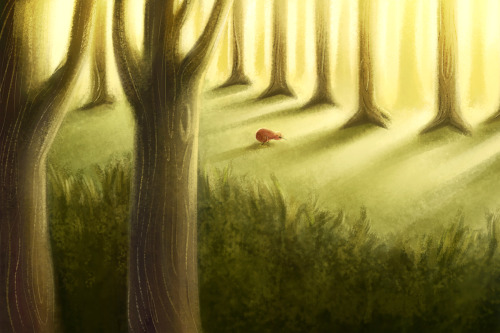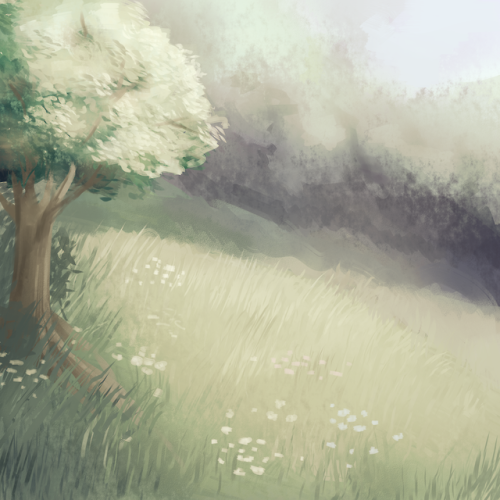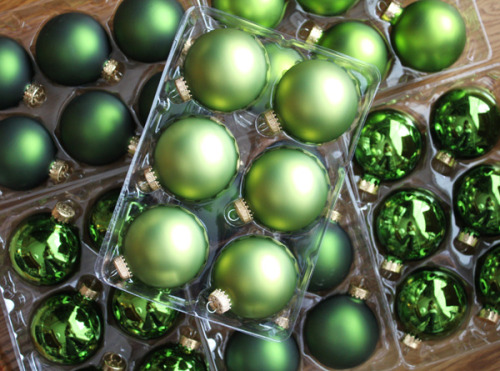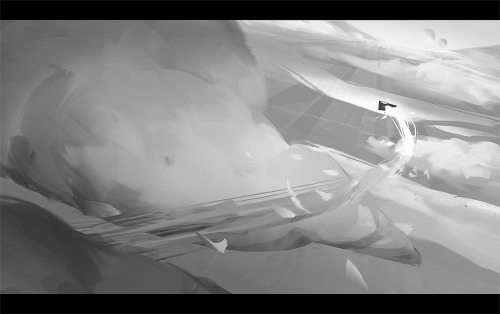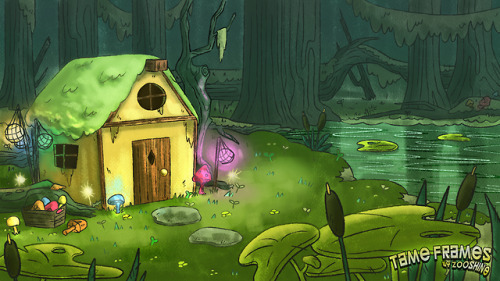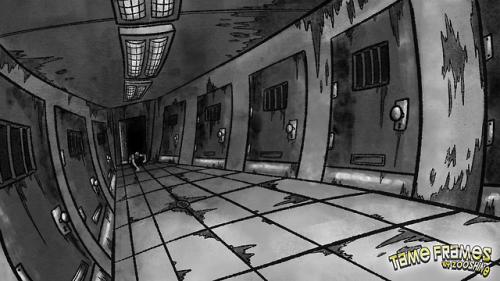#environment
Conservation groups in Canada are buying up the country’s hunting licenses. And the government is into it.
Earlier this year, the British Columbia government officially endorsed the practice of conservation groups buying hunting licenses from guides like Peter Klaui.
But there’s sort of a wink and a nod in conservationists’ deal with the government. In order to buy the hunting licenses, his group has to use them.
“We’ve had to show what’s called commercial activity,” explains Genovali. Once a year, they take out tourists for a fake hunt.
“We take clients on hunts in our guide outfitting territories and we look for bears — the difference is we shoot them with cameras.”
Post link
Some background paintings Enjoy! #Doodle #fantasy #art #digital #digitalart #medieval #style #photoshop #gameenvironment #digitalpainting #digitaldrawing #conceptart #concept #artistsoninstagram #art #artwork #artstyle #artstagram #environment #environment #mergekingdom #ux #mobilegames #backgrounds #landscape #ui #sketch #gram #gramgames #gamebackground #gameart
https://www.instagram.com/p/B1tK70AD7v4/?igshid=oz6a0ruh9ah
Post link

Garden enthusiasts around the world know that compost is an excellent garden soil conditioner and additive which improves the productiveness and also workability connected with almost any type of topsoil. Digging in aerobic garden compost into your existing garden soil, makes it richer and more healthy helping plant life develop faster and stronger which as a side effect will help our world in a variety of basic ways from food production to irrigation.
This is exactly why Aerobic Compost is loved and cherished by garden enthusiasts all around the world because it has plenty of mineral deposits and nutrients which appropriate for stimulating the healthy, rich and rapid development of plants.
The technique behind aerobic composting depends upon the basic idea of return, which deals with the theory of whatever you put in can help identify what it is you go out. Composting yard garden waste products plus kitchen area leftovers is most likely the most beneficial and also the simplest step you can require to lessen waste and develop a good, sustainable garden.
Making use of compost within your back garden recycles vitamins and minerals and organic and natural matter which helps to grow hassle-free flowers or vegetables by using a lot less water, commercial fertilizers and even pesticides. Being aware of what compost really is in addition to how it can help your garden, will lead to high quality garden compost, even for those newbie garden enthusiasts, so following is a quick check list outlining the particular 7 components needed to ensure an effective and healthy composting load.
1. The Correct Kind Of Products - We’re continually being notified that for people to keep in good condition we need a healthy diet plan and precisely the exact same holds true about the compost pile. All the active ingredients that you contribute to your composting pile are its sources of food and energy.
Composting microorganisms survive best on a mixture of succulent tasty nitrogen plentiful materials called “greens”, such as fresh new lawn clippings, weeds, and also garden plants, as well as woody carbon abundant aspects called “browns”, like autumn leaves, branches, straw or paper.
I would believe that you might have all discovered before that consisting of just food wastes from the cooking area in your garden compost is a great concept. While this does work, an excellent mixture of browns and greens is important for developing quick results. As a general general rule, you should load your aerobic composting load, or composting bin with one part “Green” type products to around 30 parts of “Brown” type materials.
This ratio is important due to the fact that an aerobic pile containing lots of browns will require a long time to decay, whilst a great deal of greens will lead to a stinky algae type of mess.
Bear in mind, that too produce the best type of compost, all the products you add to the compost pile must have these following characteristics. 1), they should be bio-degradable and 2), they must include products that are enjoyed by the micro-organisms. Then this suggests that you really need to steer clear of the important things they do not like such as different meats, bone fragments, fats and cooking oils in addition to milk associated items simply due to the fact that they do not break down successfully and usually make the compost heap smell bad. Also, including meat associated items to an aerobic compost pile is a lot like providing an open welcome for rats and other such scavenging animals to feed upon your compost pile.
2. Product Size - Similar to a lot of things in this life, size really does matter. Adding big branches, huge leafy products or perhaps entire food products on your compost pile is just going to decrease its rate of decomposition. All of the composting microbes, bugs and composting worms living in your compost only have small jaws so naturally they like smaller sized portions to chew on. Cutting larger organic food products in to smaller sized bits, by utilizing a saw, garden shredder or your lawn mower will help break down the larger items into smaller bite-sized pieces.
Nearly all germs’s and micro-organisms usually have a difficult time discovering their preferred foods included within big woody type brown materials due to their hard exteriors so shredding the materials you add helps them on their way. Considering that the compostable materials are made much smaller sized, a lot more surface area and inner area will be exposed to the microorganisms which carry out the job of decomposition.
If these materials are separated and decreased beforehand, it can help speed up the decomposition process because the smaller the pieces, the much faster they can break down. Nevertheless there is also a disadvantage in shredding woody materials to carefully.
These smaller sized particles will likely produce a more compressed aerobic compost heap minimising ventilation and air circulation inside the heap which might in turn lead to an anaerobic condition because of the insufficient oxygen therefore the stack may have to be forked over more often.
3. The Compost Lots Size - How big your composting stack is also makes a huge difference not simply to the speed of decay but for the last quality of the completed pile. Normally, a compost pile requires to be at most comparable to about one cubic metre (3 x 3 x 3 feet) in volume as this makes it easier to manage. Smaller sized aerobic piles tend to dry out quickly for that reason need routine watering, although commercially available composting bins which have strong sides plus a lid can help keep smaller sized stacks damp. Larger aerobic composting piles inhabit a lot extra space and will need to be dished out to allow more air into their center.
Furthermore, dishing out an aerobic compost heap on a regular basis to move freshly added external products towards the stacks center, or even to a different location or composting bin is simpler and much less effort when the real size of the compost pile is far more convenient.
4. Water Content - One other crucial component with regards to fast aerobic composting is the correct amount of water. Microbes reside in thin watery films which surround the components within the compost heap so it helps to keep the compost pile damp at all times. If your stack becomes dried, the bacterial microorganisms are unable to work successfully so consist of some additional greens. Should the stack become too damp, the bacterial microorganisms are not able to receive the amount of oxygen they want to breath so consist of some additional browns and dish out the stack to mix it in.
It is basic to learn if your compost heap consists of the appropriate volume of water (40-60%), simply grab a small handful from the compostable material and then squeeze it. If water leaks out through your fingers, then the stack has actually become too damp. Preferably the compost needs to be a little wet, similar to a moist fabric or sponge to be able to guarantee bacterial decomposition and growth.
5. Aeration - the composting of products is certainly an aerobic process. In order to help create high quality compost easily, a lot of fresh tidy air is important to let the microbes and bugs living and flourishing inside it breathe. Shelling out your garden compost using a spade or pitchfork as soon as or perhaps twice a week helps aerate the stack in addition to putting the freshly included fresher external products into its middle and vice-versa.
The approach of forking or turning and including dry or coarse products to the compost pile will help increase aeration, avoid odour-causing bacteria’s from developing and also help to quicken the aerobic composting process. This action of handing over garden compost regularly in order to help speed up the stacks decomposition process is called “active composting”. Merely turning and forking the pile enables surplus water to leave and evaporate providing fresh tidy air to the pile at the same time.
6. Micro-organisms and Bugs - No aerobic composting stack worth its salt would not be total without the existence of the microbes and bugs which do all the work. It is these tiny little air-breathing micro-organisms and their bigger soil caring cousins which are found naturally within the soil structure that will thrive within the wet and nutrient-rich environments which you have developed.
The smaller decomposters for example fungi and germs start the decomposition process whilst bigger sized bugs such as worms, beetles, millipedes and centipedes, finish the decay cycle. What’s left is a nearly black humus soil improving medium.
To be able to effectively develop and increase, all these macro and micro-organisms need an energy source like for example the “browns”, which supplies them with a carb source and the “greens”, which gives them a protein abundant source. In addition to these they also require oxygen and water to survive.
Nevertheless similar to humans, these bugs also love it warm and cosy, which indicates your compostable active ingredients will definitely be become an ended up compost far more quickly during the summer season when the sun’s rays help warm things up compared to the chillier winter months.
7. Do not Rush, Be Patient - Aerobic composting takes some time. The speed or rate of composting trusts great deals of aspects as we have seen, such as the wetness content, level of aeration, along with the carbon-to-nitrogen portion, the real greens-to-browns ratio. Generally, aeration and humidity are normally the two essential elements influencing the amount of time required to develop your completed garden compost.
But you can help Nature on her way by routine forking and turning of your compost heap which will probably produce quality compost in about one or two months in the summer season whilst regular monthly turnings might develop garden compost from about four to six months in time. The speediest composting takes place when you have already pre-mixed the browns and greens materials, including some previous microbe rich compost and turning or blending the stack weekly, in addition to controlling the amount of air and water. But if all that is simply excessive work, then sit back, relax and let the bugs do the work.
Aerobic garden compost is a superb garden soil additive which improves the workability and performance of your garden soil. The proper amount and sort of materials you include into the compost pile really makes a huge difference on the level of quality and the composting period.
You ought to consider your aerobic compost pile as being like a self included eco-system, and in order for it to establish and make it through, this particular eco-system needs the right mixture of components and products such as “Oxygen” (the air), “Heat” (the sun), “Food” (the compostable materials), and “Wetness” (the water), with the resulting quality and quantity of the finished garden compost being figured out by simply how well you have the ability to manage and manage all of these four variables.
Click here for more info

Gardeners all over the world understand that garden compost is an excellent garden soil conditioner and additive which improves the efficiency and also workability related to nearly any kinds of topsoil. Digging in aerobic garden compost into your existing garden soil, makes it richer and healthier helping plant life develop faster and stronger which as a negative effects will help our planet in a wide array of easy ways from food production to irrigation.
This is exactly why Aerobic Garden compost is loved and treasured by gardeners all around the world due to the fact that it has plenty of mineral deposits and nutrients which appropriate for stimulating the healthy, lush and fast development of plants.
The method behind aerobic composting depends on the basic idea of return, which deals with the theory of whatever you put in can help identify what it is you get out. Composting backyard garden waste products plus kitchen leftovers is probably the most useful and also the most basic step you can require to minimize waste and develop a great, sustainable garden.
Making use of garden compost within your back garden recycles vitamins and minerals and organic and natural matter which helps to grow hassle-free flowers or vegetables by utilizing a lot less water, industrial fertilizers and even pesticides. Knowing what garden compost really is along with how it can help your garden, will result in high quality garden compost, even for those newbie garden enthusiasts, so following is a fast check list outlining the particular seven aspects needed to guarantee an effective and healthy composting heap.
1. The Correct Types of Materials - We’re continuously being informed that for people to keep in good condition we need a healthy diet and precisely the exact same is true about the compost pile. All the components that you add to your composting pile are its sources of food and energy.
Composting microorganisms make it through best on a mix of succulent delicious nitrogen plentiful materials called “greens”, such as fresh new lawn clippings, weeds, and also garden plants, as well as woody carbon rich aspects called “browns”, like fall leaves, branches, straw or paper.
I would believe that you might have all seen before that including just food wastes from the kitchen area in your garden compost is a great concept. While this does work, a great mixture of browns and greens is vital for creating quick outcomes. As a general guideline, you should fill your aerobic composting heap, or composting bin with one part “Green” type materials to around 30 parts of “Brown” type materials.
This ratio is important since an aerobic stack consisting of lots of browns will need a very long time to decay, whilst a lot of greens will lead to a stinky algae type of mess.
Bear in mind, that too develop the very best type of garden compost, all the products you contribute to the compost pile must have these following characteristics. 1), they need to be bio-degradable and 2), they should include items that are loved by the micro-organisms. Then this suggests that you really need to avoid the important things they do not like such as different meats, bone pieces, fats and cooking oils along with milk related items simply due to the fact that they do not break down efficiently and typically make the compost heap smell bad. Also, including meat related products to an aerobic compost heap is a lot like offering an open welcome for rats and other such scavenging animals to feed on your compost heap.
2. Material Size - As with a great deal of things in this life, size really does matter. Adding large branches, big leafy products or even entire food items on your compost heap is only going to decrease its rate of decay. All of the composting microorganisms, bugs and composting worms living in your garden compost just have little jaws so naturally they like smaller sized portions to chew on. Cutting larger organic food items in to smaller sized bits, by using a saw, garden shredder or your lawn mower will help break down the bigger products into smaller bite-sized portions.
Nearly all germs’s and micro-organisms typically have a tough time discovering their favourite foods consisted of within large woody type brown materials due to their difficult outsides so shredding the materials you include helps them on their way. Because the compostable products are made much smaller sized, a lot more surface and inner location will be exposed to the microorganisms which carry out the job of decay.
If these products are separated and lowered in advance, it can help speed up the decomposition process since the smaller the pieces, the faster they can disintegrate. However there is also a down side in shredding woody materials to finely.
These smaller sized particles will likely produce a more compressed aerobic compost pile reducing ventilation and air flow inside the stack which could in turn result in an anaerobic condition because of the insufficient oxygen and so the heap may have to be handed over more often.
3. The Compost Heaps Size - How huge your composting heap is also makes a huge difference not simply to the speed of decay but for the final quality of the completed stack. Typically, a compost heap requires to be at most equivalent to about one cubic metre (3 x 3 x 3 feet) in volume as this makes it simpler to manage. Smaller sized aerobic piles tend to dry out easily therefore need regular watering, although commercially offered composting bins which have solid sides plus a cover can help keep smaller piles damp. Bigger aerobic composting stacks occupy a lot additional space and will have to be dished out to allow more air into their center.
In addition, handing over an aerobic compost pile on a regular basis to move freshly included external products towards the piles center, or perhaps to a different location or composting bin is easier and much less effort when the actual size of the compost heap is a lot more practical.
4. Water Material - One other crucial element with regards to quick aerobic composting is the right amount of water. Microorganisms reside in thin watery movies which surround the components within the compost heap so it helps to keep the compost pile damp at all times. If your stack ends up being dried out, the bacterial microbes are unable to work effectively so include some additional greens. Needs to the pile end up being too damp, the bacterial microbes are unable to receive the quantity of oxygen they want to breath so consist of some additional browns and hand over the stack to blend it in.
It is simple to find out if your compost heap includes the correct volume of water (40-60%), just take hold of a small handful from the compostable product and after that squeeze it. If water seeps out through your fingers, then the stack has become too damp. Preferably the garden compost needs to be a little wet, just like a wet fabric or sponge to be able to guarantee bacterial decay and development.
5. Aeration - the composting of products is absolutely an aerobic process. In order to help create premium compost quickly, a lot of fresh clean air is necessary to let the microorganisms and bugs living and thriving inside it breathe. Dishing out your garden compost using a spade or pitchfork once or perhaps twice a week helps aerate the stack in addition to putting the newly included fresher external products into its middle and vice-versa.
The approach of forking or turning and consisting of dry or coarse products to the compost pile will help increase aeration, prevent odour-causing bacteria’s from developing and also help to speed up the aerobic composting procedure. This action of shelling out garden compost on a regular basis in order to help accelerate the stacks decay procedure is known as “active composting”. Merely turning and forking the pile enables surplus water to escape and evaporate delivering fresh clean air to the stack at the same time.
6. Micro-organisms and Bugs - No aerobic composting heap worth its salt would not be complete without the presence of the microbes and bugs which do all the work. It is these small little air-breathing micro-organisms and their larger soil loving cousins which are found naturally within the soil structure that will flourish within the damp and nutrient-rich surroundings which you have developed.
The smaller decomposters for instance fungis and germs start the decay process whilst bigger sized bugs such as worms, beetles, millipedes and centipedes, complete the decay cycle. What’s left behind is an almost black humus soil improving medium.
To be able to effectively develop and increase, all these macro and micro-organisms require an energy source like for example the “browns”, which offers them with a carbohydrate source and the “greens”, which gives them a protein abundant source. In addition to these they also require oxygen and water to endure.
Nevertheless just like humans, these bugs also like it warm and cosy, which indicates your compostable active ingredients will definitely be become a finished garden compost much more quickly throughout the summer months when the sun’s rays help warm things up compared to the colder cold weather.
7. Do not Hurry, Be Patient - Aerobic composting takes time. The speed or rate of composting relies upon lots of elements as we have seen, such as the wetness material, level of aeration, along with the carbon-to-nitrogen portion, the actual greens-to-browns ratio. Normally, aeration and humidity are usually the two key aspects affecting the quantity of time required to develop your finished compost.
But you can help Mother Nature on her way by regular forking and turning of your compost pile which will probably produce quality garden compost in about one or two months in the summer whilst monthly turnings could produce compost from about four to six months in time. The speediest composting occurs when you have already pre-mixed the browns and greens products, adding some previous microbe rich compost and turning or blending the pile weekly, along with controlling the amount of air and water. But if all that is just excessive work, then kick back, relax and let the bugs do the work.
Aerobic garden compost is a superb garden soil additive which increases the workability and effectiveness of your garden soil. The right amount and kinds of products you add into the compost pile really makes a huge difference on the level of quality and the composting period.
You should think about your aerobic compost pile as resembling a self consisted of eco-system, and in order for it to establish and endure, this specific eco-system requires the appropriate mix of active ingredients and products such as “Oxygen” (the air), “Heat” (the sun), “Food” (the compostable materials), and “Wetness” (the water), with the resulting quality and amount of the completed compost being identified by simply how well you are able to manage and manage all of these 4 variables.
I love when I go to a pub and see that they’ve upcycled! Such a good idea. Finding different uses for an object is a lot more eco-friendly than throwing it away. Tell me what you have upcycled!
.
.
.
.
.
#upcyclingfurniture #upcyclingproject #lowwasteliving #lowimpactmovement #lowimpactliving #reuserevolution #choosetoreuse #reducewaste #creativereuse #sustainablelifestyle (at High Wycombe, Buckinghamshire)
https://www.instagram.com/p/Bs3ltujnaqF/?utm_source=ig_tumblr_share&igshid=cvzwn0zz7ia3
Post link
Early Paleo Pines Concept Art
What sort of dinos may you come across in the meadows, forest and marsh?
Throwback to our early environment concept exploration!
Wishlist on steam
>>Follow the game’s development on discord <<
Post link
Protecting the Climate, Protecting Human Rights
Policymakers are converging on Bonn, Germany this week to hammer out details so countries can begin implementing the Paris climate agreement. As they work, they would do well to remember the speeches given by government leaders at the April 22 signing ceremony at the United Nations.
Post link
On a Crisp Day
This started out as a Google Street View study but then I lost the reference and it became my own thing.
Post link










I tabled at a con, and I’ve got leftover stock!
I accept Venmo and Paypal,and can mail anywhere in the US with no extra charge for you, and every order somes with a free linocut print as thanks
DM or email me at [email protected] if you want to make any of if these yours!
So it turns out I actually really love background painting! I had to make some for work since @ZooshineStudios decided to launch a Twitch overlay service! Here are some of my favorites :] You can see our new site here: https://tameframes.com/
Post link
- Klamath Basin Water Struggles Spread To Trinity River
- Washington Enviro Groups Intend to Sue EPA Over Inadequate State Fish Consumption Rates
- Field Notes: Of Mountain Goats And Alpine Frogs
- Diarrhetic Shellfish Toxin Closes Beaches In South Puget Sound For First Time
- Could Coal Exports Run Through Vancouver Port?
- Report: Oregon’s CO2 Emissions Are Leveling Off
- Wildlife Officials Move Ahead With Killing Barred Owls
- Vanquishing Zombie Fishing Nets In Puget Sound
- States’ Status Update On Wolf-Elk Relationship: It’s Complicated
- Port of Vancouver Approves Biggest Oil-Train Project In NW













